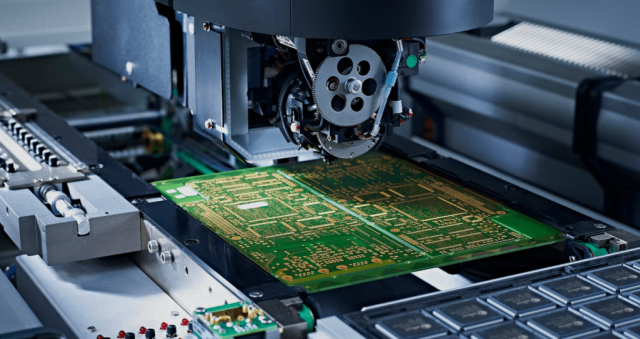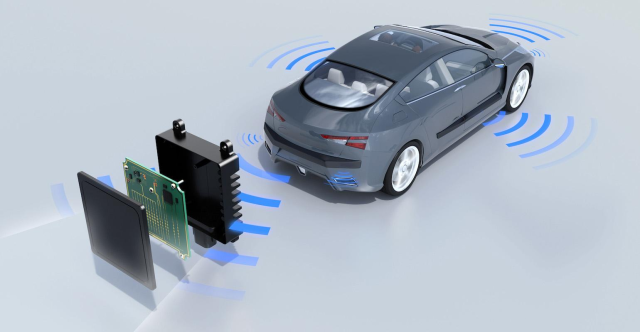Engineering Context — Why RF-35 PCB Is Key to Automotive Radar Precision
As modern automotive radar systems evolve toward 76–81 GHz mmWave operation, PCB materials must ensure phase stability, low insertion loss, and precise impedance control across multiple layers.
The RF-35 PCB, a Taconic PTFE glass-reinforced laminate, combines Df = 0.0018 @ 10 GHz and Dk = 3.5 ± 0.05, enabling a balance between electrical precision and manufacturability—ideal for radar front-end integration.
However, when integrated with standard FR-4 mechanical carrier layers or power-distribution sub-boards, hybrid stackups often introduce CTE mismatch, lamination stress, and impedance drift.
KKPCB addresses these engineering challenges through its hybrid RF stackup control and inline impedance calibration platform, designed for high-volume, automotive-qualified radar PCB production.

Core Design Challenges in RF-35 PCB Hybrid Stackups
| Design Challenge | Root Cause | Engineering Impact |
|---|---|---|
| CTE mismatch | FR-4 and PTFE laminate expansion difference | Delamination during thermal cycling |
| Dielectric inconsistency | Resin-rich transition zones | Impedance drift across RF layers |
| Copper roughness | Oxidized or uneven foil | Increased insertion loss |
| Stackup warpage | Improper press or cooling gradient | Misaligned antenna arrays, gain loss |
These mechanical and dielectric imbalances can cause >1° phase shift, degrading beam alignment in radar sensors. For OEM radar modules, that means target detection errors or reduced range performance under thermal stress.
KKPCB Hybrid Stackup Integration Framework
KKPCB’s Hybrid RF Stackup Framework transforms the complex material behavior of RF-35 PCBs into predictable, repeatable RF performance through a sequence of precision-controlled processes:
1.Thermal and CTE Balancing Simulation
-
3D lamination modeling identifies interlayer CTE gradients (PTFE: 12 ppm/°C vs FR-4: 17 ppm/°C)
-
Balanced symmetry ensures warpage < 0.15 mm / 250 mm panel
-
Stackup layers aligned to maintain phase linearity across 77 GHz sweep
2. Vacuum-Assisted Lamination
-
Vacuum pressure 180 psi @ 190°C with controlled cooling gradient
-
Resin flow monitored for void-free interlayer bonding
-
Result: No delamination after 1000 thermal cycles
3.Precision Impedance Calibration
-
Inline VNA & TDR verification up to 110 GHz
-
Real-time impedance mapping with ±5% tolerance
-
Data recorded per production lot for traceable RF certification
4. Surface and Copper Roughness Optimization
-
½ oz rolled copper (Ra < 0.8 µm) used for critical RF layers
-
Uniform surface roughness minimizes loss variation to < 0.05 dB/inch @ 77 GHz
Case Study — 79 GHz Short-Range Automotive Radar Antenna PCB

Client: European automotive radar Tier-2 supplier
Goal: Improve short-range radar resolution with hybrid RF-35 + FR-408 PCB stackup
| Parameter | Target | KKPCB Result |
|---|---|---|
| Insertion Loss | < 0.22 dB/inch @ 79 GHz | 0.18 dB/inch |
| Impedance Variation | ±5 Ω | ±3.2 Ω |
| Thermal Cycling | –55°C to +150°C, 1000 cycles | No delamination |
| Warpage | < 0.15 mm / 250 mm | Pass |
| Beam Accuracy | ±1.5° | ±0.9° |
Engineering Insight:
KKPCB developed a 5-layer hybrid PCB, combining RF-35 dielectric for RF signal layers with high-Tg FR-408 mechanical layers.
Using 3D impedance simulation and adaptive lamination pressure zoning, engineers achieved balanced phase stability across radar transmit and receive chains.
After AEC-Q200 qualification, the design maintained amplitude consistency (<0.1 dB) and signal-to-noise ratio stability under automotive vibration profiles.
Reliability Testing and Environmental Validation
| Test Type | Condition | KKPCB Result |
|---|---|---|
| Thermal Cycling | –55°C ↔ +150°C / 1000 cycles | Stable impedance, no delamination |
| Vibration Test | 10–2000 Hz / 10 G RMS | No trace fatigue or crack |
| Humidity Exposure | 85°C / 85% RH / 1000 h | Df drift < 0.0001 |
| Mechanical Shock | 50 G / 1000 repetitions | Structural integrity maintained |
Result:
All units passed long-term impedance drift < ±3%, validating RF-35 PCB’s long-term stability for automotive radar and ADAS control modules.
Comparative Insight — RF-35 vs. RO4350B
| Property | RF-35 | RO4350B |
|---|---|---|
| Dk @ 10 GHz | 3.5 ± 0.05 | 3.48 ± 0.05 |
| Df @ 10 GHz | 0.0018 | 0.0037 |
| Copper adhesion | Excellent | Moderate |
| CTE compatibility | Moderate (FR-4 hybridable) | Lower (ceramic-filled) |
| Processability | Easier to drill and laminate | Higher temperature required |
While RO4350B excels in ultra-high power circuits, RF-35 PCB delivers superior copper adhesion, surface quality, and hybrid lamination compatibility — ideal for mass-produced radar PCBs with cost-sensitive requirements.
Conclusion — Stable RF-35 PCB Integration for Automotive mmWave Radar
RF-35 PCBs are transforming automotive radar design, providing both low-loss signal transmission and structural reliability under high-temperature cycling.
KKPCB’s hybrid lamination control, impedance calibration, and reliability testing ensure that every radar board delivers:
- Consistent impedance & phase accuracy
- Reliable adhesion and dimensional stability
- Qualified performance under AEC-Q200 validation
From short-range radar arrays to long-range front-end systems, KKPCB’s RF-35 PCB platform enables scalable, reliable, and production-ready mmWave radar integration.

